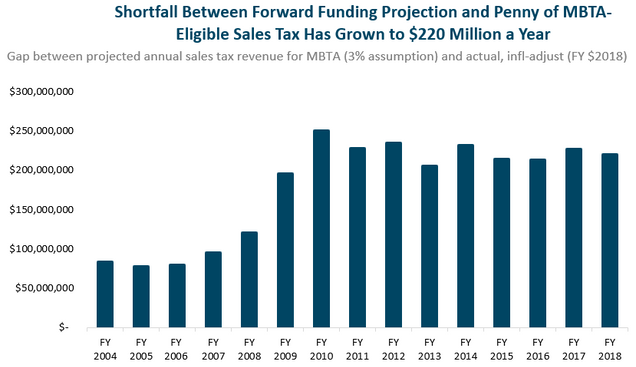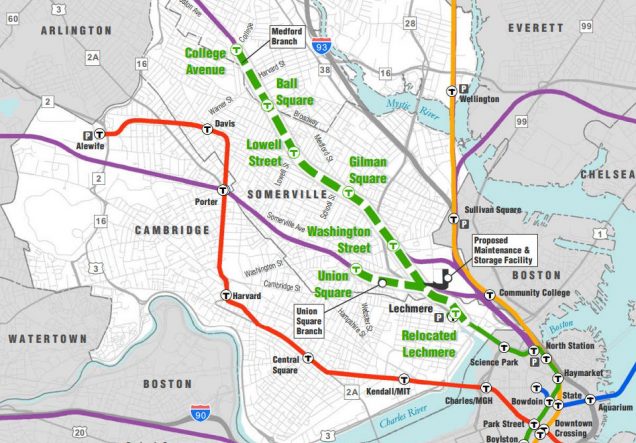Tagged: CARES Act
The Waiting Game: Supreme Court’s Decision on the Lawfulness of the Deferred Action for Childhood Arrivals (DACA) Program
As May 2020 comes to an end, many eagerly await a Supreme Court decision that could affect the futures of thousands of DACA recipients and shape immigration policy as we know it. The Deferred Action for Childhood Arrivals (DACA) is the program that is currently under scrutiny; in particular the Supreme Court will be deciding on the following two issues: (1) “Whether or not the Trump administration’s decision to end DACA can be reviewed by the courts at all?” and (2) “Whether or not the Trump administration’s termination of DACA was lawful?” This program was first instituted under the Obama Administration as an executive action to do the following for qualified Dreamers who completed the process of a first-time or renewal application: (1) protection from deportation for a time period, and (2) work authorization for a set period of time.
During the Obama Administration, the DREAM Act of 2010 (H.R. 6497) was proposed and passed in the House but did not pass the Senate. The purpose, like its other variations, was intended to aid undocumented individuals by providing them a way to eventually reach legal status, because they were brought to the United States when they were children and have to live with a continued sense of uncertainty that attaches to being undocumented. In its stead, the Obama Administration designed a temporary solution, which came to be known as DACA, in which an individual could qualify by meeting a series of requirements (i.e. arriving in the United States before they turned sixteen years old).
This policy gave a lot of individuals hope, but everything changed with the arrival of the Trump Administration. The Trump Administration’s policies quickly took on an anti-immigration rhetoric, and his Administration rescinded the policy on the basis that it was illegal. Thereafter, lawsuits followed with Department of Homeland Security, et al., v. Regents of the University of California, et al. reaching the Supreme Court level.
Regarding the two issues laid out above, there are many ways the decision could go, but the one that would have the worst effect on DACA recipients would be the court siding on the Trump Administration’s side in saying that “DACA was an unconstitutional use of presidential power to begin with.” This could have a devastating impact on DACA recipients especially at a time when they find themselves in the midst of the COVID-19 global pandemic alongside the rest of the world.
For example, ABC News quotes a college student saying “As a DACA recipient, and everything going on with COVID-19 and as well with the Supreme Court ruling coming at any time — It’s been very stressful.” On top of college, she works with authorization under DACA, but COVID-19 has added other stressors as she finds herself as the only provider at home. Ending DACA at a time like this would end up being very challenging and harmful for individuals like these who are trying to stay afloat during this pandemic.
 Nevertheless, as this country struggles to recover from this pandemic, the most interesting development has happened to this Supreme Court case showing how vital Dreamers and immigrants have been to making this country function smoothly despite the havoc wreaked by the virus. A CNN report discusses how: “A letter sent to the Supreme Court states approximately 27,000 Dreamers are health care workers — including 200 medical students, physician assistants, and doctors — some of whom are now on the front lines in hospitals across the country.” The Supreme Court agreed to take this brief into consideration, and it makes one wonder whether the timing of the decision during a pandemic and the supplemental brief will have any impact at all?
Nevertheless, as this country struggles to recover from this pandemic, the most interesting development has happened to this Supreme Court case showing how vital Dreamers and immigrants have been to making this country function smoothly despite the havoc wreaked by the virus. A CNN report discusses how: “A letter sent to the Supreme Court states approximately 27,000 Dreamers are health care workers — including 200 medical students, physician assistants, and doctors — some of whom are now on the front lines in hospitals across the country.” The Supreme Court agreed to take this brief into consideration, and it makes one wonder whether the timing of the decision during a pandemic and the supplemental brief will have any impact at all?
Despite the positive contributions of these and other essential individuals, there have been a lot of issues that have also surfaced reflecting further difficulties that Dreamers are enduring. An example of this is federal funding under CARES Act. The pandemic has had even more disastrous effects on particular communities, and though the Coronavirus Aid, Relief, and Economic Security (CARES) Act of 2020 was passed with a part of it designed to provide aid and federal dollars to help students, and yet the benefits are not available to everyone. DACA students could not qualify to receive money under this Act, and it was one of the reasons the Democrats reached out to Secretary DeVos to change the language but to no avail. The House has brought another bill to the forefront, the Heroes Act, which proposes many changes; one aspect of which directly seeks to overturn “Secretary DeVos’s decision to exclude DACA students from the emergency aid.”
This is a hopeful change, but the culmination of issues including the Supreme Court decision yet to be released, the uncertainty of COVID-19 on employment, health, and education, and a delay in passing the House bill paints a bleak picture.
Yet, at the end of the day, it is as Antonio Alarcon described it on CNN: “We’re hopeful that the Supreme Court will see the humanity of our stories and see the humanity of our families, because at the end of the day, this is a nation of immigrants.”
 Nabaa Khan anticipates graduating from Boston University School of Law in May 2021.
Nabaa Khan anticipates graduating from Boston University School of Law in May 2021.
COVID-19’s Economic Impact: Can Amending the Fair Debt Collection Practices Act Help?
COVID-19’s impact on the world has been unsparing: it has taken thousands of loved ones and overburdened healthcare systems. Its economic impact has been no less devastating. Government-mandated shutdowns have forced many small businesses to shut their doors. Those lucky enough to remain open have seen a marked decrease in customers. A McKinsey & Company survey polling small and medium-sized businesses found that 59% of small or medium-sized businesses reported experiencing a “significant” drop in personal and business income. 25% had faced such a precipitous drop that they expected they would have to file for bankruptcy in the coming months. This impact will have a broad effect: these businesses represent 48% of the U.S. economy and employ over 60 million people.
COVID-19 has also been unsparing when it comes to consumers. Not only are those employed by small or mid-sized businesses losing their jobs, but even those working at large international companies are also losing their jobs or facing pay cuts. Self-employed individuals have seen their business opportunities vanish. Right now, because of moratoria on foreclosures, evictions, and debt collection, these issues are looming when the overall economy begins to resume. Without any intervening forces, a wave of evictions, foreclosures, repossessions, and bankruptcies is likely to come.
Currently, little protects consumers and small businesses during emergencies or disasters. While larger institutions are expected to have plans, even participating in stress tests with regulators, small businesses usually do not have such protective measures. Indeed, because so many operate on a thin profit margin, investing in plans to address something that seems unlikely to ever happen may seem like a waste of money. Moreover, consumers are not always going to be financially prepared either. The average American has $8,863 in their savings account. This number decreases with age: for example, young single adults under 34 have an average of $2,729 in savings. There are racial disparities too, with an average of $1,500 for Hispanic and $1,000 for Black savings account balances. (Note that this data does not include the unbanked, which is largely composed of Black and Hispanic households.)
In March 2020, Senator Sherrod Brown (D-Ohio) introduced the Small Business and Consumer Debt Collection Emergency Relief Act of 2020 (the “Act”). The Act amends the Fair Debt Collection Practices Act (“FDCPA”) to provide temporary forbearance periods after “major disasters or emergencies.” The Act could provide much-needed relief to small businesses and American consumers by expanding on current protections currently provided by the FDCPA.
Current Protections
The FDCPA became law in 1978. Its purpose was to crack down on abusive debt collection tactics. In drafting the law, Congress found that abusive debt collection practices led to “personal bankruptcies, to marital instability, to the loss of jobs, and to invasions of individual privacy.” The FDCPA covers several types of consumer debts: mortgage, credit card, student loan, and medical debts, just to name a few. Debts owed by businesses are currently not covered by the FDCPA.
One of the biggest protections afforded under the FDCPA is limiting how and when a debt collector can contact a debtor. Debt collectors cannot harass debtors, misrepresent what can occur if the debtor fails to pay, or contact the debtor in the middle of the night. While the FDCPA is imperfect—consumers regularly report violations—it provides an avenue of recourse and is regularly enforced.
The Act’s Proposals
 The Act seeks to amend the FDCPA in several ways. First, the Act amends section 3 of the FDCPA to restrict debt collection during a national disaster or emergency. The Act defines “national disaster or emergency” two ways: (1) one declared by the president under section 401 of the Robert T. Stafford Disaster Relief and Emergency Assistance Act; or (2) “an emergency involving Federal primary responsibility that is determined to exist by the President” under section 501 of that act. Next, the Act prohibits debt collectors from numerous actions ranging from charging higher fees or interest rates to seizing the property or asset at issue. Moreover, the Act pauses any legal action against the debtor, even if the proceeding began before the disaster was declared. Finally and crucially, the Act extends FDCPA protections during national disasters or emergencies to small businesses.
The Act seeks to amend the FDCPA in several ways. First, the Act amends section 3 of the FDCPA to restrict debt collection during a national disaster or emergency. The Act defines “national disaster or emergency” two ways: (1) one declared by the president under section 401 of the Robert T. Stafford Disaster Relief and Emergency Assistance Act; or (2) “an emergency involving Federal primary responsibility that is determined to exist by the President” under section 501 of that act. Next, the Act prohibits debt collectors from numerous actions ranging from charging higher fees or interest rates to seizing the property or asset at issue. Moreover, the Act pauses any legal action against the debtor, even if the proceeding began before the disaster was declared. Finally and crucially, the Act extends FDCPA protections during national disasters or emergencies to small businesses.
The Act is a way of addressing some of the consumer protection shortcomings of the CARES Act. For example, there is a 120 day moratorium on foreclosures and evictions, but only for those who have federally-backed mortgages, live in buildings financed by federally-backed mortgages, or receive rental funding through a federal program. While this covers a significant number of individuals and homes, about 30% of Americans are left out of this provision. The debt collection moratorium under the Act would extend to those Americans. It also addresses the issue the COVID-19 pandemic has made clear: small businesses suffer when they are forced to shut down, as they may not always have the resources or option to continue operating virtually. Their financial troubles largely came as the result of a forced shutdown. More generally, the Act’s amendments can cover future national emergencies or pandemics.
While this is not an overall solution to COVID-19’s economic impact, it can provide some relief to consumers and small businesses. It may allow people to be more understanding of opening up gradually rather than quickly, too. While it does not solve a reduced or lack of income, having some assurance that the car will not be repossessed or a debt collector will not be regularly calling can provide some much needed relief in what has been a stressful time. Currently, debtors do not have such relief. Despite the pandemic, debt collectors have still been calling consumers. In Massachusetts, the Attorney General’s Office sought to ban debt collection during the height of the pandemic. However, a federal judge ruled against the state’s emergency resolution. FTC guidance is not particularly helpful either: it recommends talking things out with the debt collector and asking that they stop calling. Congress has already done a lot through the CARES Act to help consumers during the pandemic. To further assist them, Congress should pass Senator Brown’s bill.
 Kathryn Buckley anticipates graduating from Boston University School of Law in May 2021.
Kathryn Buckley anticipates graduating from Boston University School of Law in May 2021.
Funding the MBTA: Getting Derailed Plans Back on Track
Taking the T
The transit system of Eastern Massachusetts, governed by the Massachusetts Bay Transportation Authority, has been the subject of much ire by residents of Greater Boston for decades, particularly where the subway, or “T,” is concerned. A prime example is last year’s decision to raise fares by 6% despite continual failures in service, such as a recent derailment on the Red Line and power shutdown on the Blue Line. As the oldest subway system in North America, many of the T’s problems stem from decades- or even century-old design decisions which are impractical to redo today. For example, its hub-and-spoke layout emphasizes access to downtown Boston at the expense of ease of travel between the edges of the system.
Broke, But Not Broken
However, the primary barrier to the T being the efficient, functional transit system that Boston needs it to be is insufficient funding relative to necessary maintenance and upgrades, not to mention its current debt load. Though the MBTA system as a whole sees more than $2 billion in annual revenue, it still endures annual operating losses of more than $36 million. Significantly, the majority of its revenue does not come from operations, i.e. fares collected, but rather from sales tax and local assessment contributions. For nearly twenty years, a “penny” of all non-meal-and-drink sales tax revenue in Massachusetts has been dedicated to the MBTA budget. Because this source of tax revenue has not grown as anticipated, the MBTA budget has consequentially fallen short of expectations by well over $200 million per year. Meanwhile, costs of new projects continue to balloon. The cost of an upgraded fare collection system, originally budgeted at just over $700 million, has now grown to over $900 million.
Boston City Councilor Michelle Wu argues that incremental fixes and patching of problems is insufficient; rather, we must invest in the system as a whole with a focus on expanding access. The necessity of serious capital investment became especially apparent after historic blizzards in early 2015 forced a system-wide shutdown. Wu has pointed to Governor Charlie Baker’s reluctance to act as an obstacle to the requisite overhaul the T needs. In response to pressure from her and other transit advocates, last summer Gov. Baker announced plans to accelerate an ongoing five-year, $8 billion capital investment program which kicked off in early 2019. The program aims to provide new rapid-transit buses and train cars, modernize the Red and Orange Lines, and fund a major expansion of the Green Line into underserved areas of Somerville and Medford. The latter, a long-suffering project decades in the making, is an example of the importance of major investment in transit: once complete, the percentage of Somerville residents within walking distance to light rail will increase to 80%, up from a current 20%. Gov. Baker’s acceleration includes more aggressive closures to allow for infrastructure work, more inspections and maintenance, negotiations with contractors, and the creation of a new team of MBTA personnel with the flexibility to work on multiple projects.
Capital Infusions
Even so, continued problems, such as the aforementioned Red Line derailment, prompted Gov. Baker to propose an $18 billion bond bill for transportation throughout the Commonwealth last year, providing money to the entire Massachusetts Department of Transportation, including a $5.7 billion slice for the MBTA. This bill, An Act Authorizing and Accelerating Transportation Investment, most recently received approval, with an amendment, from the House Committee on Bonding, Capital Expenditures and State Assets and moved before the House Committee on Ways and Means in late February, 2020. This Act would fund road and bridge repairs, MBTA upgrades, and the electrification of regional transit services, as well as contribute to big projects such as Cape Cod Canal bridges and the Green Line Extension. The bill also provides support for improving pavement on public roads and building small bridges as well as help for municipalities seeking to make their roads more cyclist- and pedestrian-friendly. Other provisions aim to reduce traffic congestion and greenhouse gas emissions by building bus lanes and working to reduce bottlenecks. Transportation Secretary Stephanie Pollack highlighted the importance of action on other projects which complement improved transit service to maximize the impact of the bill. Such legislation includes Gov. Baker’s proposed Housing Choices Act, which would streamline zoning approval for certain housing projects.
This past January, Gov. Baker also proposed a $135 million budget increase for the MBTA, possibly in response to a scathing December 2019 report by the Safety Review Panel which found deficiencies “in almost every area” of the MBTA system. A major criticism was the recent over-emphasis on capital improvements and not enough support for regular maintenance and safety, with staff being diverted away from the latter. However, it is unclear how exactly the infusion of funding would be spent.
It should be noted that there currently remain $743 million in outstanding senior revenue bond loans to MassDOT, though the Department maintains an A+ rating for borrowing. Though the Act Authorizing and Accelerating Transportation Investment would be funded by further borrowing via bonds, its original version allocated half of all revenue from a potential greenhouse gas cap-and-trade program with other states in the region to public transit, creating a stream of revenue as well as encouraging more fuel-efficient cars. However, that provision was stricken by the Transportation Committee, which argued that they cannot allocate funds to a program that does not yet exist. Lawmakers instead plan to increase fees on transportation network companies and deeds excise taxes.
COVID-19 Crisis
The amendments, including those made earlier by the House Committee on Transportation, include the elimination of $50 million in business tax cuts to encourage employees to work from home and thus reduce traffic congestion, a quaint decision in the midst of the COVID-19 pandemic which has forced millions to work from home anyway. The MBTA has been understandably hit hard, and as of April, ridership on the T was down more than 90% from late February, with bus service down nearly 80%. Anticipated losses this year exceed $213 million due to a 95% plunge in fare collection and drops in revenue from advertising and state sales tax. MassDOT hopes to cover the loss with an expected infusion of $840 million in federal funds through the CARES Act. Meanwhile, the MBTA has reduced service, instituted cleaning and sanitizing regimes for vehicles, and has begun requiring employees and remaining riders to wear face masks.
Needless to say, major investment decisions as of this writing have been put on hold. However, once this crisis has passed, it is critical that Massachusetts act to ensure its transit services remain a functional asset to the people of the Greater Boston Area and beyond.
 Kellen Safreed anticipates graduating from Boston University School of Law in May 2021.
Kellen Safreed anticipates graduating from Boston University School of Law in May 2021.
How We Gonna Pay Last Year’s Rent?* Advocating Rental Housing Reform in Boston
*Adam Pascal et al., Rent, on, Rent Original Major Picture Soundtrack (Warner Records 2005).
Unprecedented Rental Relief in Unprecedented Times
The novel coronavirus is disrupting so much of life in Boston, MA. From school and business closings to rising unemployment rates, more residents than ever are concerned than ever with affording basic essentials—including the rent due on the first of each month. The reality of how to pay for rent is substantial in Boston, where an estimated sixty percent of over seven-hundred thousand residents rent, making it the fourth most densely populated region in the United States after the New York Metro Area, Greater Los Angeles, and South Florida Metro Area.
As of April 20, Gov. Charlie Baker signed legislation placing a moratorium on non-emergency residential evictions and foreclosures during the novel coronavirus pandemic. Under this moratorium, landlords are not able to file eviction notices for the next 120 days, or for 45 days from the lifting of Gov. Baker’s emergency declaration, whichever comes first. Additionally, the moratorium bans late fees and negative reporting to credit-rating agencies for unpaid rents if tenants can prove pandemic-related issues with late payments.
Figure 1: Baker signs bill blocking evictions during coronavirus crisis (Tim Logan, Baker signs bill blocking evictions during coronavirus crisis, Boston Globe (Apr. 20, 2020))
Additionally, the federal government has passed a $2 trillion coronavirus rescue package—the CARES Act—including a 120-day moratorium on most evictions at properties that receive federal subsidies or that federal entities insure. Notably, the CARES Act does not apply to eviction proceedings in progress before President signed the legislation on March 27th, or to eviction cases meeting a number of exceptions discussed in the Act.
On April 4, Mayor Martin Walsh announced $3 million in city funds to help Boston residents at risk of losing their rental housing due to the novel coronavirus pandemic. The Rental Relief Fund is managed by the Office of Housing Stability, in partnership with non-profit partners Metro Housing Boston and Neighborhood of Affordable Housing. This program will provide eligible applicants with up to $4,000 in financial assistance to be used for rent. Additionally, the funding will only be available to households earning less than 80 percent of Area Median Income (AMI), which is $72,000 for a two-person household. A significant portion of these funds are reserved for households with extremely low incomes (under $25,000 for a single-person household), and very low-incomes or less than $42,000 for a single person (50 percent AMI). "In the midst of the COVID-19 pandemic, a national crisis at a scale not seen in our lifetime, it is imperative that all levels of government exercise all possible tools to ensure the health and safety of our residents, and to keep them stably housed," said Mayor Walsh. (Thomas Stackpole, How Did Renting in Boston Become Such a Nightmare?, Boston Magazine (May 30, 2020))
The Rent is Due Every Day: Framework Changes to the Rental Housing Market
The efforts of the federal and MA government to address the needs of renters in Boston are necessary measures to help residents maintain stable housing in these unprecedented times. Nevertheless, it is merely band-aid for the greater problem of the daily struggle for low-income Boston residents to make rent, or even establish tenancies.
The Commonwealth provides financial assistance through the Residential Assistance for Families in Transition (“RAFT”) program in which up to $4,000 may be awarded to applicants to establish tenancies. However, with Fair Market Rent (“FMR”) rising in Massachusetts to $1,425 for a one-bedroom and $1,758 for a two-bedroom apartment, the $4,000 allocation from the RAFT program may not be enough to overcome the high bar to starting tenancies in Massachusetts for low-income families who are homeless or at risk of becoming homeless. The barriers to entry establishing a tenancy in MA include: the first full month of rent, last full month of rent, security deposit equal to the first month’s rent, broker fee equal to first month rent, and one-time fee covering installation of a new key and lock. The cumulative effect of these fees requires upwards of four months of rent to gain tenancy in Massachusetts. The impact of this legislation disproportionately bar low-income residents from securing and maintaining affordable housing.
When federal and state aid to low-income residents is not sufficient to help families begin tenancies, it is imperative to look to alleviating some of these barriers to entry to affordable housing. In addition to being the fourth most densely populated region in the United States, Boston also is also boasts the fourth-highest average rental market. Compared to the rental markets of New York City and Los Angeles, the Boston market imposes the broker fee, equal to one full month’s rent, which may be borne by the tenant. This differs to New York’s recent ban on broker fees, and Los Angeles’ burden shifting of broker fees to the landlord.
Massachusetts should consider following in the footsteps of their metropolitan neighbors and propose legislative action banning broker fees in order to decrease the burden to tenants establishing tenancy. In the alternative, the legislature should support the proposed bill H.4452: An Act Relative to Consumer Rights of Renters which shifts the burden of paying broker fees to the landlord with the following language: “[t]his fee shall only be paid by the lessor of the residential dwelling and shall not be transferred to or paid by an other party.”
Conclusion
The novel coronavirus is truly a pandemic affecting every area of daily life, but it’s disparate impact to low-income families towards their struggle to afford housing illuminates a deeper issue that needs to be addressed with expediency. The cost of securing and maintaining a tenancy in Boston is simply too high and not sustainable. As a result, the legislature should tackle broker fees directly to allow more residents the opportunity to initiate affordable tenancies in Boston. This may take the form of eliminating broker fees in their entirety, or shifting the burden to landlords to pay the fee, but ultimately the legislature should take action to protect the most vulnerable member in this time—low-income residents trying to establish and maintain affordable housing for themselves and their families.
 Alexandra Trobe anticipates graduating from Boston University School of Law in May 2021.
Alexandra Trobe anticipates graduating from Boston University School of Law in May 2021.





